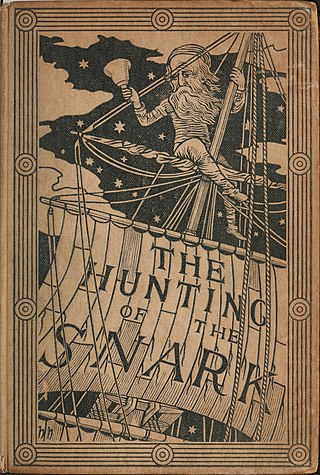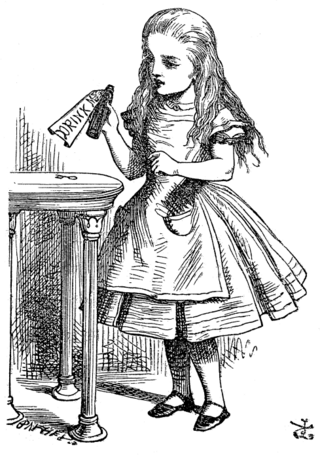Related Research Articles
In the Platonic, Neopythagorean, Middle Platonic, and Neoplatonic schools of philosophy, the demiurge is an artisan-like figure responsible for fashioning and maintaining the physical universe. The Gnostics adopted the term demiurge. Although a fashioner, the demiurge is not necessarily the same as the creator figure in the monotheistic sense, because the demiurge itself and the material from which the demiurge fashions the universe are both considered consequences of something else. Depending on the system, they may be considered either uncreated and eternal or the product of some other entity.
Hypatia was a Neoplatonist philosopher, astronomer, and mathematician who lived in Alexandria, Egypt, then part of the Eastern Roman Empire. She was a prominent thinker in Alexandria where she taught philosophy and astronomy. Although preceded by Pandrosion, another Alexandrian female mathematician, she is the first female mathematician whose life is reasonably well recorded. Hypatia was renowned in her own lifetime as a great teacher and a wise counselor. She wrote a commentary on Diophantus's thirteen-volume Arithmetica, which may survive in part, having been interpolated into Diophantus's original text, and another commentary on Apollonius of Perga's treatise on conic sections, which has not survived. Many modern scholars also believe that Hypatia may have edited the surviving text of Ptolemy's Almagest, based on the title of her father Theon's commentary on Book III of the Almagest.

The Hunting of the Snark, subtitled An Agony, in Eight fits, is a poem by the English writer Lewis Carroll. It is typically categorised as a nonsense poem. Written between 1874 and 1876, it borrows the setting, some creatures, and eight portmanteau words from Carroll's earlier poem "Jabberwocky" in his children's novel Through the Looking-Glass (1871).

Alice's Adventures in Wonderland is an 1865 English children's novel by Lewis Carroll, a mathematics don at the University of Oxford. It details the story of a girl named Alice who falls through a rabbit hole into a fantasy world of anthropomorphic creatures. It is seen as an example of the literary nonsense genre. The artist John Tenniel provided 42 wood-engraved illustrations for the book.

Alice is a fictional character and the main protagonist of Lewis Carroll's children's novel Alice's Adventures in Wonderland (1865) and its sequel, Through the Looking-Glass (1871). A child in the mid-Victorian era, Alice unintentionally goes on an underground adventure after falling down a rabbit hole into Wonderland; in the sequel, she steps through a mirror into an alternative world.

Alice Pleasance Hargreaves was an English woman who, in her childhood, was an acquaintance and photography subject of Lewis Carroll. One of the stories he told her during a boating trip became the classic 1865 children's novel Alice's Adventures in Wonderland. She shared her name with "Alice", the story's protagonist, but scholars disagree about the extent to which the character was based upon her.

Ernst Alfred Cassirer was a German philosopher. Trained within the Neo-Kantian Marburg School, he initially followed his mentor Hermann Cohen in attempting to supply an idealistic philosophy of science.

Karoline Leach is a British playwright and author, best known for her book In the Shadow of the Dreamchild (ISBN 0-7206-1044-3), which re-examines the life of Lewis Carroll, the author of Alice's Adventures in Wonderland. This book and her subsequent work on what she terms the "Carroll Myth" have been major sources of upheaval and controversy in recent years and she has produced very polarized responses from Carroll scholars and lay enthusiasts.
Gnosticism refers to a collection of religious groups originating in Jewish religiosity in Alexandria in the first few centuries AD. Neoplatonism is a school of Hellenistic philosophy that took shape in the 3rd century, based on the teachings of Plato and some of his early followers. While Gnosticism was influenced by Middle Platonism, neoplatonists from the third century onward rejected Gnosticism. Nevertheless, Alexander J. Mazur argues that many neoplatonic concepts and ideas are ultimately derived from Sethian Gnosticism during the third century in Lower Egypt, and that Plotinus himself may have been a Gnostic before nominally distancing himself from the movement.
Morton Norton Cohen was a Canadian-born American author and scholar who was a professor at City University of New York. He is best known for his studies of children's author Lewis Carroll including the 1995 biography Lewis Carroll: A Biography.
The Lewis Carroll Society of North America (LCSNA) is a learned, not-for-profit organization dedicated to furthering interest in the life and works of the Rev. Charles L. Dodgson, known to the world as Lewis Carroll, through its publications, and by providing a forum for speakers and scholars, and helping collectors, students, and other Carroll enthusiasts connect with each other.

Behind the Looking Glass (ISBN 978-1847184863), by Sherry L. Ackerman, addresses the contemporary deconstruction of the Carroll Myth. The book offers an examination of the nineteenth century Neoplatonic Revival in Great Britain., with special emphasis upon its influence on the writings of Lewis Carroll. Conciliatory points between revived Neoplatonism, theosophy and spiritualism are identified.
Neoplatonism was a major influence on Christian theology throughout Late Antiquity and the Middle Ages in the East, and sometimes in the West as well. In the East, major Greek Fathers like Basil, Gregory of Nyssa and Gregory of Nazianzus were influenced by Platonism and Neoplatonism, but also Stoicism often leading towards asceticism and harsh treatment of the body, for example stylite asceticism. In the West, St. Augustine of Hippo was influenced by the early Neoplatonists Plotinus and Porphyry. Later on, in the East, the works of the Christian writer Pseudo-Dionysius the Areopagite, who was influenced by later Neoplatonists such as Proclus and Damascius, became a critical work on which Greek church fathers based their theology, like Maximus believing it was an original work of Dionysius the Areopagite.
Neoplatonism is a version of Platonic philosophy that emerged in the 3rd century AD against the background of Hellenistic philosophy and religion. The term does not encapsulate a set of ideas as much as a series of thinkers. Among the common ideas it maintains is monism, the doctrine that all of reality can be derived from a single principle, "the One".

Charles Lutwidge Dodgson, better known by his pen name Lewis Carroll, was an English author, poet, mathematician, photographer and Anglican deacon. His most notable works are Alice's Adventures in Wonderland (1865) and its sequel Through the Looking-Glass (1871). He was noted for his facility with word play, logic, and fantasy. His poems Jabberwocky (1871) and The Hunting of the Snark (1876) are classified in the genre of literary nonsense. Some of Alice's nonsensical wonderland logic reflects his published work on mathematical logic.
John Alexander Stewart was a Scottish writer, educator and philosopher. He was a university professor and classical lecturer at Christ Church, Oxford from 1875 to 1883, White's Professor of Moral Philosophy at Oxford, and professorial fellow of Corpus Christi College, from 1897 to his retirement in 1927. Throughout his academic career, he was an editor and author of works on Aristotle and considered one of the foremost experts on the subject. His best known books were Notes on the Nicomachean Ethics of Aristotle (1892) and The Myths of Plato (1905).

Isa Bowman (1874–1958) was an actress, a close friend of Lewis Carroll and author of a memoir about his life, The Story of Lewis Carroll, Told for Young People by the Real Alice in Wonderland.

Lewis Carroll: A Biography is a 1995 biography of author Lewis Carroll by Morton N. Cohen, first published by Knopf, later by Macmillan. It is generally considered to be the definitive scholarly work on Carroll's life. Cohen's approach is mainly chronological, with some chapters grouped by theme, such as those on Carroll's religion, his love of little girls, and his guilty feelings. Cohen, a Carroll scholar for 30 years, opts to use Dodgson's first name, Charles, throughout the work, because it "seems most appropriate in a book dealing with the intimacy of his life".

JuliaHuxley was a British scholar. She founded Prior's Field School for girls, in Godalming, Surrey in 1902.
Patrick Curry is an independent Canadian-born British scholar who has worked and taught on a variety of subjects from cultural astronomy to divination, the ecology movement, and the nature of enchantment. He is known for his studies of J. R. R. Tolkien.
References
- ↑ Piaffe Flyer, Issue January '07, by Lucy Maynard. http://www.enydcta.doityourselfsitebuilder.com/f/SherryProfile.pdf%5B%5D
- ↑ "International Society for Neoplatonic Studies" . Retrieved 2008-09-13.
- ↑ "Ackerman, Sherry L. - Scholars Directory" . Retrieved 2008-09-13.
- ↑ The World Soul and the Soul of the World: Philosophy, Cosmos, and Culture at the Fifteenth Annual Conference on Global and Multicultural Dimensions of Ancient and Medieval Philosophy and Social Thought; Binghamton University, Binghamton, New York, October 26, 1996; "Philosophy, Cosmos, and Culture". Archived from the original on 2008-05-14. Retrieved 2008-06-19.
- ↑ ( ISBN 978-1847184863)
- ↑ "Contrariwise" . Retrieved 2008-09-13.[ permanent dead link ]
- ↑ Cohen, Morton N. (October 2003). "When Love was Young". Times Literary Supplement.
- ↑ Yoga for Equestrians: A New Path for Achieving Union with your Horse, by Linda Benedict and Veronica Wirth, Trafalgar Square Books, 2000.
- ↑ Philosophy in Practice: Dressage in the Fourth Dimension. Fifth International Conference on Philosophy in Practice; Wadham College, Oxford. June 10–11, 1999.
- ↑ ( ISBN 978-1577316237)
- ↑ ( ISBN 978-0-9846032-0-6)